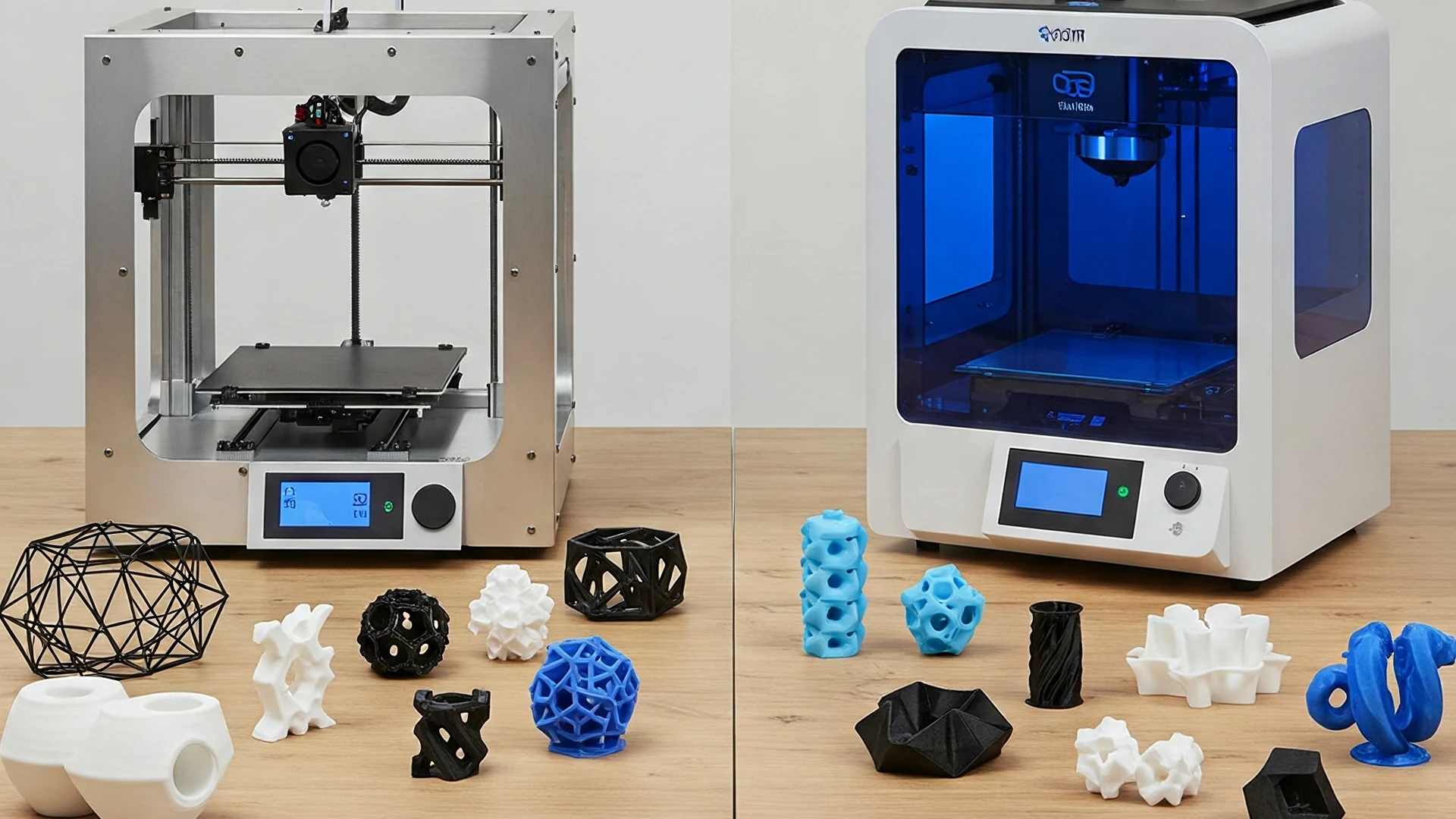
FDM vs SLA – Which 3D Printing is Better for You?
Comparison of the two most common 3D printing technologies
🟠
FDM (Fused Deposition Modeling)
Suitable for:
Functional prototypes and spare parts
Materials:
- PLA (eco-friendly, basic models)
- ABS (durability, mechanical parts)
- PETG (impact resistance)
- TPU (flexible materials)
- ASA (UV resistance, outdoor use)
- Nylon (high strength and durability)
- PAHT-CF (carbon fiber composite, extreme strength)
Advantages:
- Lower price
- Durable prints
- Wide range of materials
- Suitable for larger objects
Disadvantages:
- Visible layers
- Lower detail precision
- Limitations for complex geometries
🔵
SLA (Stereolithography)
Suitable for:
Perfectly smooth and detailed models
Materials:
- Photopolymer resins
- Specialized resins (dental, transparent)
Advantages:
- Highest details
- Smooth surface
- Precision
- Ideal for small objects with details
Disadvantages:
- Lower durability
- Higher price
- Limited print size
- Post-processing required
How to Choose the Right Technology?
Choose FDM if:
- You need functional, mechanically durable parts
- You're looking for a more affordable solution
- You don't need a perfectly smooth surface
- You're printing larger objects
Choose SLA if:
- You need a high level of detail
- You care about a smooth surface
- You're printing small, detailed objects
- You need precise models (e.g., for jewelry)
Not sure? Tell us what you'll be using the print for, and we'll recommend the optimal technology.
Get Advice